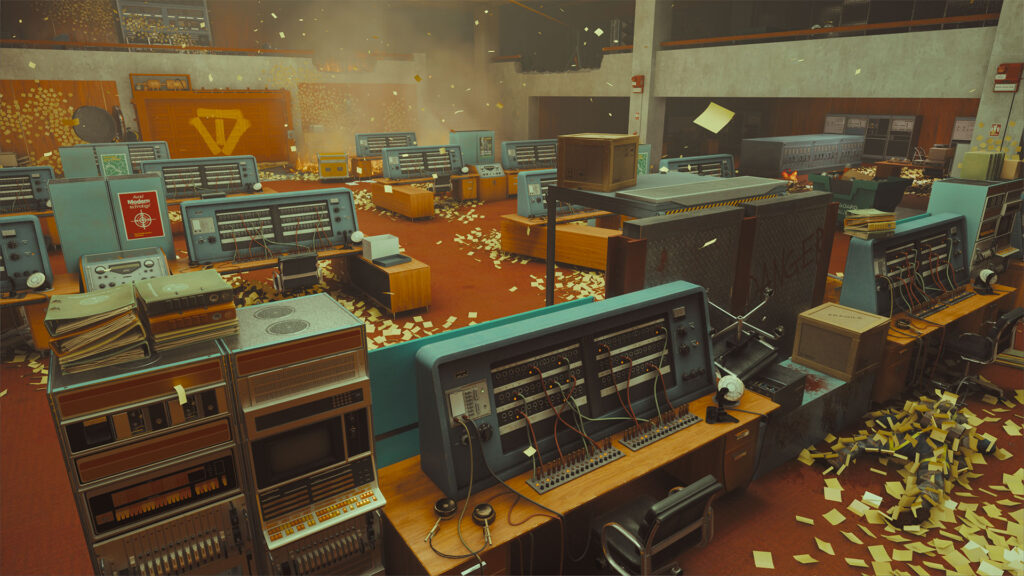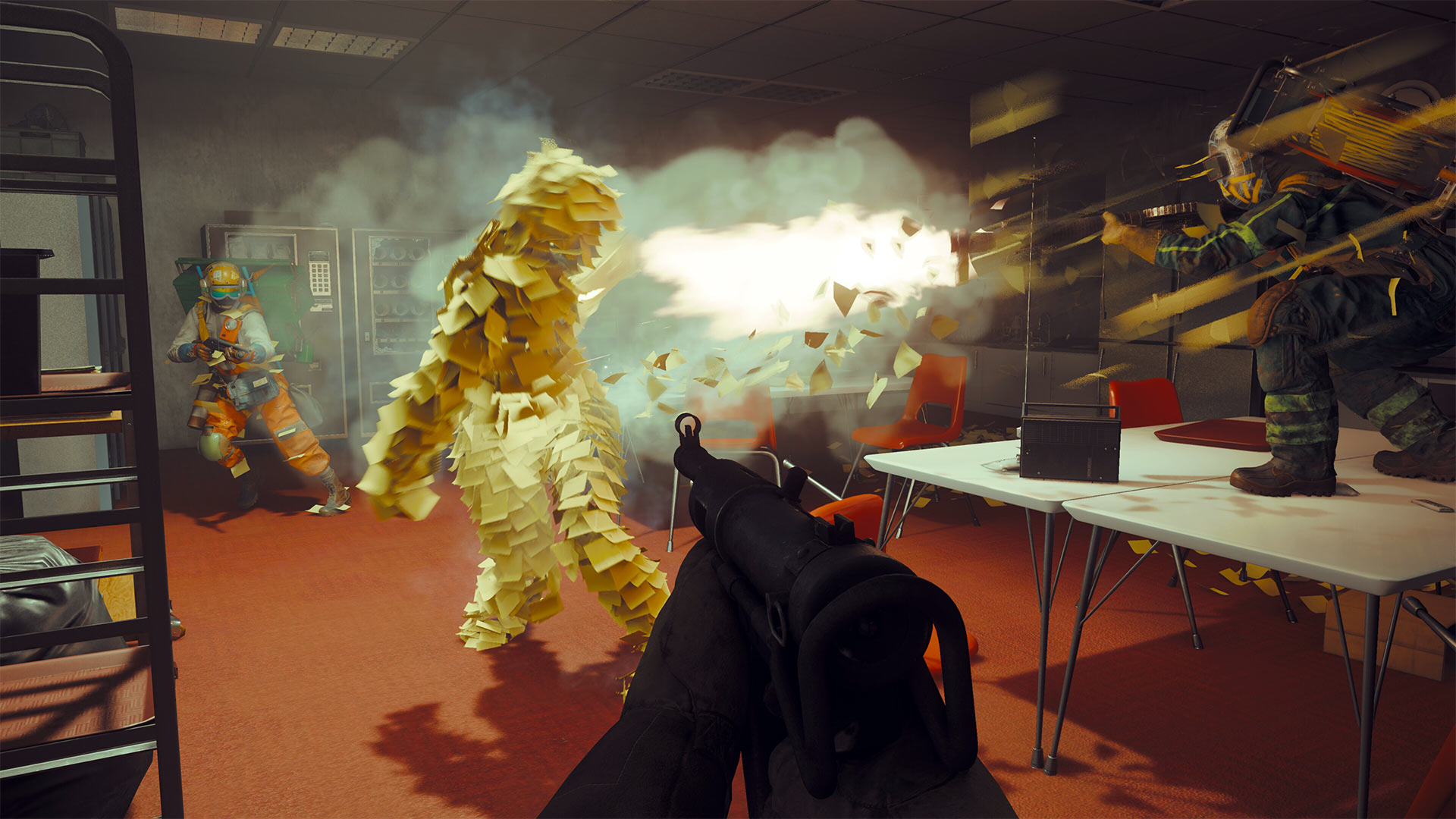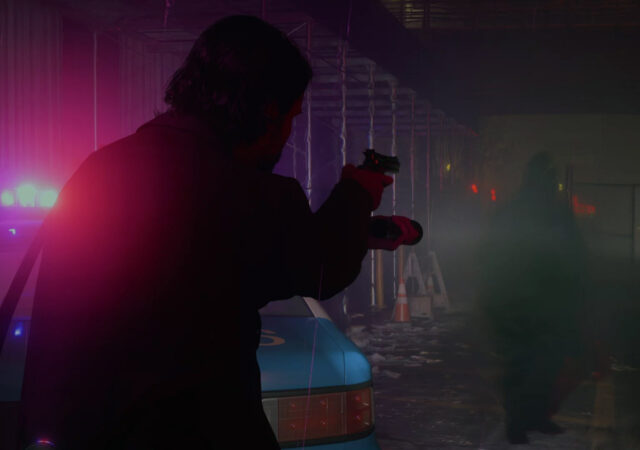Remedy Entertainment has long stood as a beacon for cinematic, single-player storytelling. Titles like Max Payne, Alan Wake, and Control have cemented the studio’s legacy in narrative-driven, third-person action experiences. When the Remedy logo appears in a game, it’s not just branding – it’s a seal of quality. A promise of immersive storytelling, atmospheric design, and distinct gameplay.
So when FBC: Firebreak was unveiled as Remedy’s very first multiplayer game, it naturally garnered interest. Even more surprising: it’s a first-person shooter, a genre the studio has only briefly explored through its campaign work on CrossFireX (which is no longer available). And yet, the presence of that Remedy logo hints at something more. It signals that despite the shift in genre and format, players can expect the same commitment to innovation and narrative excellence that has defined Remedy’s work for decades.
However, FBC: Firebreak represents a departure from that tradition. This game does not feature a traditional narrative or campaign, nor does it really continue the story of Control. Instead, FBC: Firebreak focuses on expanding the universe Control introduced. Set six years after the events of that game, the Hiss are still hissing and Director Faden has tasked the Firebeak unit to clean house. Apart from some witty banter between FBC personell, that’s about as much story as you’d get. The game doesn’t really need to have to either, but as a fan, I was hoping to find out a bit more about the state of the universe, or the fate of our beloved characthers.
Instead, Firebreak bets big on co-op gameplay.
“Without a built-in way to communicate, matches with random players often devolve into misfires and missed opportunities.”
The Oldest House, Now With More F(r)iends
FBC: Firebreak is a three-player co-op experience that leans heavily on teamwork. Players choose from three distinct “Crisis Kits,” each offering unique tools and abilities tailored for cooperative play. Whether you’re shielding teammates with the Splash Kit, charging up FBC tech using the Jump Kit, or repairing mission-critical machinery as the Fix Kit, coordination isn’t just helpful, it’s essential. Especially on higher difficulty levels.
And that’s what makes the lack of in-game voice chat so baffling. Without a built-in way to communicate, matches with random players often devolve into misfires and missed opportunities. Unless you’re queuing up with a pre-formed squad, the experience can quickly turn chaotic. Yes, the game includes a ping-button to notify players, but in the heat of the moment, that doesn’t really cut it.
On the bright side, each Crisis Kit feels genuinely distinct, and you’re free to switch between them mid-session. This flexibility makes adapting to mission (or player) demand seamless. You’ll have a good time exploring the kits and their abilities.

The progression system in Firebreak is a pleasant surprise. As you play, you earn points that can be spent on upgrades, gear, and utilities, offering a steady sense of reward. Drawing clear inspiration from Helldivers 2, the system walks a fine line between accessibility and strategic depth. Unlocks feel meaningful, and the customization options give players room to fine-tune their loadouts, giving them a competitive edge in combat.
But progression is only as exciting as the playground it feeds into, and that’s where Firebreak starts to lose steam.
The Mold Problem
At launch, Firebreak suffers from a noticeable lack of content. The game offers only a handful of maps and a small pool of mission objectives that, while entertaining at first, begin to feel repetitive after just a few sessions, making the experience more of a short thrill than a long-term venture. By the time you’ve unlocked most of the upgrades, you’ve seen all the game has to offer and there’s no real reason to continue playing.
“It’s proof that the game can deliver memorable encounters when it leans into Remedy’s flair for the unexpected.”
That said, one standout job is “Paper Chase”, which is easily my favorite. Not only does it feature a lot of environmental interactivity, but it also features an exciting and original boss fight. It’s proof that the game can deliver memorable encounters when it leans into Remedy’s flair for the unexpected.
Unfortunately, moments like that are the exception rather than the rule. With no voice chat, and little variety in content, Firebreak struggles to offer reasons to stick around. Luckily we have been promised some post-launch content, but right now it’s difficult to imagine it sustaining an active player base.
North(more)light
From a graphical standpoint, Firebreak is looking great. Powered by the proprietary Northlight engine, the environments are as gorgeous as ever. Densely detailed, even when scrutinized up close in first-person view.
Weapons are a particular highlight. Each firearm is meticulously crafted, boasting distinct animations and impactful sound design that makes every shot feel weighty and satisfying. The Magnum revolver especially stood out, it instantly reminded me of Half-Life 2’s iconic hand cannon. That heavy, thunderous blast brought a nostalgic grin to my face.
That said, I did find myself tweaking the auto-aim. The enemies come in fast and often swarm in numbers, and I was missing more shots than I’d like to admit. It got frustrating at times, but I’ll be honest—that might be more on me than the game. My reflexes aren’t what they used to be. Chalk it up to age catching up, maybe!
Through the Threshold
In the end, FBC: Firebreak is a bold step for Remedy into unfamiliar territory. While its core mechanics show promise and its presentation is top-tier thanks to the Northlight engine, the game ultimately feels stale. The distinct Crisis Kits, solid gunplay, and occasional flashes of Remedy’s creative genius are hampered by the absence of voice chat and a noticeable lack of variety in missions. However, its approachable price point and inclusion in Game Pass and PlayStation Plus make many of its shortcomings easier to forgive. For curious players or fans of the Control universe, it’s worth diving in, but without a substantial injection of new content soon, it’s hard to see Firebreak holding the attention of its player base for the long haul.


